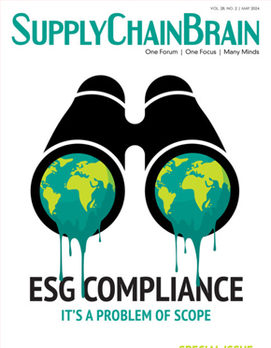
The disruptions to supply chains in the past few years, especially due to the pandemic, have companies rethinking their strategies. This has opened opportunities for other Asian countries beyond China. However, the economic recovery in Asia is losing momentum. From Japan to South Korea to China, companies are exploring supply chain diversification to reduce their reliance on a single source of production or distribution. Meanwhile, ongoing trade tensions between the U.S. and China have the potential for impacts on these alternatives.
The expectation is that China and Thailand will continue to show higher growth in 2023 than 2022, but the rest of the region is seeing a much slower growth pattern. Tighter finances, a weak global economy and geopolitical tensions are all ongoing concerns to consider.
The U.S. is looking into additional export restrictions on goods going to China, and this will definitely impact supply chains. However, the severity of the impact will depend on the products and industries affected. Also, some other variables may come into play, depending on how quickly companies are able to react and adapt to the changes.
Established supply chains could experience potential delays, price increases, product shortages and, in the worst-case scenario, absolute interruption in the chain.
The good news is that U.S. companies have shown great resilience in recent years through the pandemic and the subsequent supply chain interruptions that came along. For the most part, they have been agile in managing their businesses and their supply chains. Hopefully, this will mean that if further restrictions occur, these will be manageable, albeit a bit disruptive.
There are several options that U.S. companies can use to deal with supply chain diversification — and a few new phrases coming into our vocabulary as well. First, companies have historically looked at offshoring their supply chain and in many cases, their own manufacturing sites. This has given them a major cost benefit.
Now there is a move to “near-shoring” or “onshoring.” This means the move of production facilities and suppliers closer to home, which allows for reduced lead times, lower transportation costs and greater supply chain certainty.
In addition, U.S. companies are also exploring vertical integration opportunities — which effectively means bringing the critical parts of their supply chain in-house. This typically happens through acquisition, and reduces reliance on external parties, creating greater control.
Finally, looking at diversification and multi-sourcing in the supply chain is another option. This option reduces reliance on any single major supplier, and mitigates the supply chain disruptions by having more options for suppliers.
All these options can help companies ensure they are able to continue being competitive, as well as maintaining consistency and integrity in their supply chain.
There is also a move to diversify away from a reliance on China and, naturally, India and other ASEAN countries provide credible alternatives. However, it is not simply about having a low-cost labor force — there must be a solid infrastructure, a skilled labor force, access to raw materials and a strategic location, among other considerations.
To become more attractive to international trade, governments are also reviewing and changing policies to simplify regulations to make themselves more competitive. India, in particular, has become more attractive recently, and the country has an advantage, as it recently jumped in the rankings of the latest World Bank’s “Ease of Doing Business” report. The country has benefitted from “Make in India,” a program that launched in 2014 to encourage manufacturing. We may see other initiatives like this one from other countries, in order to remain competitive.
Another growing global trend in supply chain is digitalization, blockchain and the use of artificial intelligence (AI). These innovative data tools allow for greater insight into supplies, identifying potential vulnerabilities earlier and enabling proactive risk-management strategies. These technologies will also help companies be agile in the face of disruption. These developments are changing the management of supply chains on a global scale.
The options will help explore diversification methods, and continue to help companies deal with any future sanctions or restrictions. Making supply chains less vulnerable and weighing the risks against effective considerations are among the major lessons we have learned in the last few years.
Gordon Cessford is the president and regional director of North America for Atradius Trade Credit Insurance, Inc.







